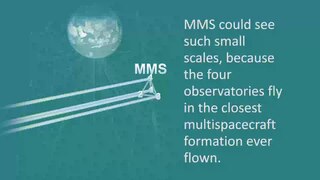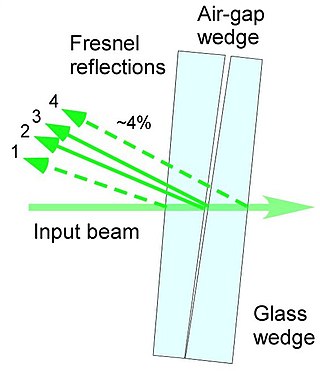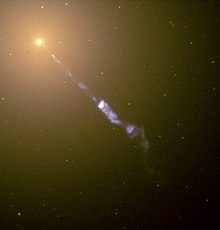Metallic hydrogen is a phase of hydrogen in which it behaves like an electrical conductor. This phase was predicted in 1935 on theoretical grounds by Eugene Wigner and Hillard Bell Huntington.

An ion source is a device that creates atomic and molecular ions. Ion sources are used to form ions for mass spectrometers, optical emission spectrometers, particle accelerators, ion implanters and ion engines.

In plasma physics, an Alfvén wave, named after Hannes Alfvén, is a type of plasma wave in which ions oscillate in response to a restoring force provided by an effective tension on the magnetic field lines.
Plasma acceleration is a technique for accelerating charged particles, such as electrons or ions, using the electric field associated with electron plasma wave or other high-gradient plasma structures. These plasma acceleration structures are created using either ultra-short laser pulses or energetic particle beams that are matched to the plasma parameters. The technique offers a way to build affordable and compact particle accelerators.
The name electrospray is used for an apparatus that employs electricity to disperse a liquid or for the fine aerosol resulting from this process. High voltage is applied to a liquid supplied through an emitter. Ideally the liquid reaching the emitter tip forms a Taylor cone, which emits a liquid jet through its apex. Varicose waves on the surface of the jet lead to the formation of small and highly charged liquid droplets, which are radially dispersed due to Coulomb repulsion.
High-harmonic generation (HHG) is a non-linear process during which a target is illuminated by an intense laser pulse. Under such conditions, the sample will emit the high order harmonics of the generation beam. Due to the coherent nature of the process, high-harmonics generation is a prerequisite of attosecond physics.
Dissipative solitons (DSs) are stable solitary localized structures that arise in nonlinear spatially extended dissipative systems due to mechanisms of self-organization. They can be considered as an extension of the classical soliton concept in conservative systems. An alternative terminology includes autosolitons, spots and pulses.

Self-focusing is a non-linear optical process induced by the change in refractive index of materials exposed to intense electromagnetic radiation. A medium whose refractive index increases with the electric field intensity acts as a focusing lens for an electromagnetic wave characterized by an initial transverse intensity gradient, as in a laser beam. The peak intensity of the self-focused region keeps increasing as the wave travels through the medium, until defocusing effects or medium damage interrupt this process. Self-focusing of light was discovered by Gurgen Askaryan.
An X-ray laser can be created by several methods either in hot, dense plasmas or as a free-electron laser in an accelerator. This article describes the x-ray lasers in plasmas, only.

The air-wedge shearing interferometer is probably the simplest type of interferometer designed to visualize the disturbance of the wavefront after propagation through a test object. This interferometer is based on utilizing a thin wedged air-gap between two optical glass surfaces and can be used with virtually any light source even with non-coherent white light.

The Plasmakristall-3 Plus laboratory was a joint Russian-German laboratory for the investigation of dusty/complex plasmas on board the International Space Station (ISS), with the principal investigators at the German Max Planck Institute for Extraterrestrial Physics and the Russian Institute for High Energy Densities. It was the successor to the PKE Nefedov experiment with improvements in hardware, diagnostics and software. The laboratory was launched in December 2005 and was operated for the first time in January 2006. It was used in 21 missions until it was deorbited in 2013. It is succeeded by the PK-4 Laboratory.

A sawtooth is a relaxation that is commonly observed in the core of tokamak plasmas, first reported in 1974. The relaxations occur quasi-periodically and cause a sudden drop in the temperature and density in the center of the plasma. A soft-xray pinhole camera pointed toward the plasma core during sawtooth activity will produce a sawtooth-like signal. Sawteeth effectively limit the amplitude of the central current density. The Kadomtsev model of sawteeth is a classic example of magnetic reconnection. Other repeated relaxation oscillations occurring in tokamaks include the edge localized mode (ELM) which effectively limits the pressure gradient at the plasma edge and the fishbone instability which effectively limits the density and pressure of fast particles.
High Harmonic Generation (HHG) is a non-perturbative and extremely nonlinear optical process taking place when a highly intense ultrashort laser pulse undergoes an interaction with a nonlinear media. A typical high order harmonic spectra contains frequency combs separated by twice the laser frequency. HHG is an excellent table top source of highly coherent extreme ultraviolet and soft X-ray laser pulses.
Bernstein–Greene–Kruskal modes are nonlinear electrostatic waves that propagate in a collisionless plasma. They are nonlinear solutions to the Vlasov-Poisson system of equations in plasma physics, and are named after physicists Ira B. Bernstein, John M. Greene, and Martin D. Kruskal, who solved and published the exact solution for the one-dimensional unmagnetized case in 1957.
The rotating wall technique is a method used to compress a single-component plasma confined in an electromagnetic trap. It is one of many scientific and technological applications that rely on storing charged particles in vacuum. This technique has found extensive use in improving the quality of these traps and in tailoring of both positron and antiproton plasmas for a variety of end uses.
Nathaniel Joseph Fisch is an American plasma physicist known for pioneering the excitation of electric currents in plasmas using electromagnetic waves, which was then used in tokamak experiments. This contributed to an increased understanding of plasma wave–particle interactions in the field for which he was awarded the James Clerk Maxwell Prize for Plasma Physics in 2005 and the Hannes Alfvén Prize in 2015.

John Holmes Malmberg was an American plasma physicist and a professor at the University of California, San Diego. He was known for making the first experimental measurements of Landau damping of plasma waves in 1964, as well as for his research on non-neutral plasmas and the development of the Penning–Malmberg trap.
Phillip A. Sprangle is an American physicist who specializes in the applications of plasma physics. He is known for his work involving the propagation of high-intensity laser beams in the atmosphere, the interaction of ultra-short laser pulses from high-power lasers with matter, nonlinear optics and nonlinear plasma physics, free electron lasers, and lasers in particle acceleration.

The Penning–Malmberg trap, named after Frans Penning and John Malmberg, is an electromagnetic device used to confine large numbers of charged particles of a single sign of charge. Much interest in Penning–Malmberg (PM) traps arises from the fact that if the density of particles is large and the temperature is low, the gas will become a single-component plasma. While confinement of electrically neutral plasmas is generally difficult, single-species plasmas can be confined for long times in PM traps. They are the method of choice to study a variety of plasma phenomena. They are also widely used to confine antiparticles such as positrons and antiprotons for use in studies of the properties of antimatter and interactions of antiparticles with matter.
Patrick Mora is a French theoretical plasma physicist who specializes in laser-plasma interactions. He was awarded the 2014 Hannes Alfvén Prize and 2019 Edward Teller Award for his contributions to the field of laser-plasma physics.









